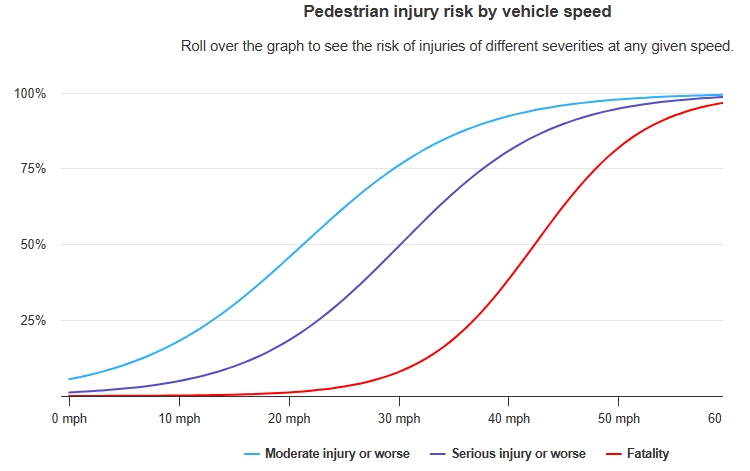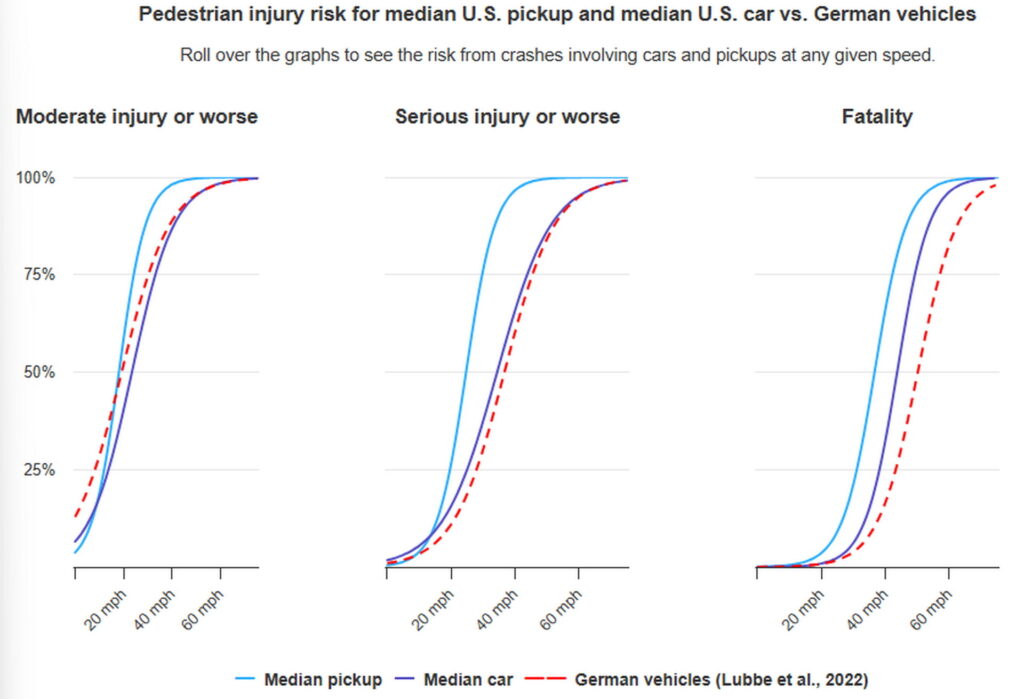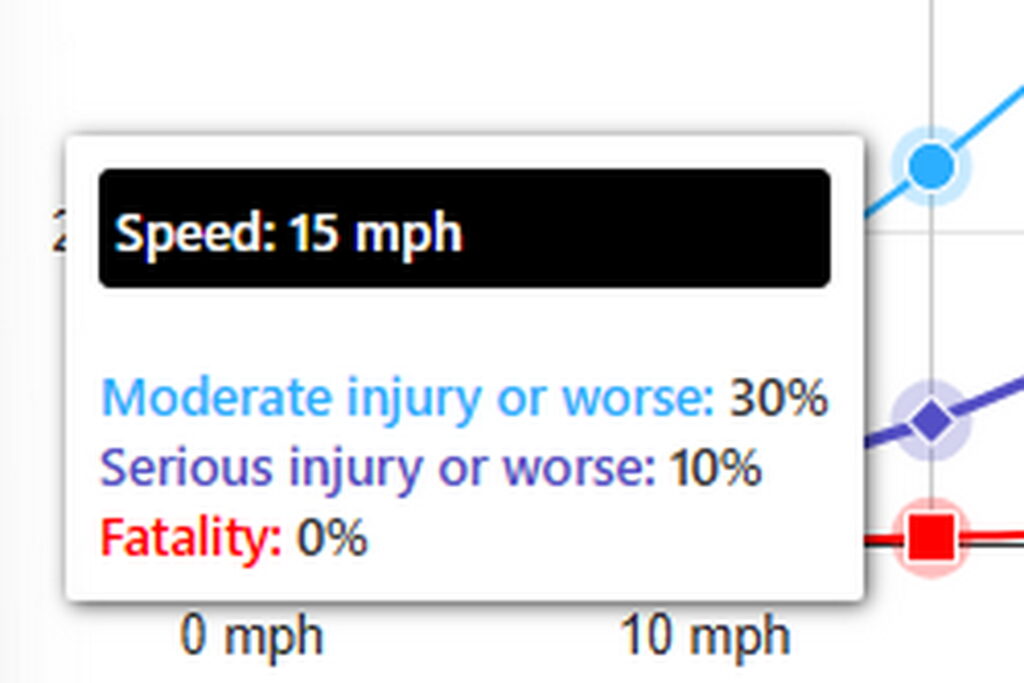- The IIHS says that vehicle height plays a huge role in pedestrian safety.
- At the same time, it acknowledges consumers’ preference to own taller vehicles.
- The solution likely includes lower speed limits in residential areas.
Road safety is a topic that countless people work on every day. At the same time, there is no blanket set of rules that can effectively apply across the world. Cars, laws, and roads are different from one nation to the next. A new study from the IIHS indicates that Americans have a bigger challenge to overcome than some other nations. In fact, that applies both literally and figuratively.
Accidents involving pedestrians are the focus of this new study. The link between speed and danger for pedestrians is one we’ve known about for decades. Now, the IIHS has evidence that vehicle height plays a huge role in pedestrian safety too.
Read: Most Drivers Say They’d Welcome Anti-Speeding Tech, Are You One Of Them?
The institution reviewed 202 crashes from between 2015 and 2022. It found, as previous studies already had, that pedestrians were in more danger, regardless of vehicle height, if that vehicle was traveling at a higher speed.
A person hit by a car going 20 mph had a 46 percent chance of having a moderate injury. At 35 mph, that potential shot up to 86 percent. The chart below demonstrates the potential for injury based on speed alone.

The new finding from the study is just how dramatically vehicle height affects safety. Here’s a direct quote from the institute about the situation.
“In general, higher vehicle front ends increased the likelihood of both moderate and serious pedestrian injuries. At 27 mph, the average speed of all 202 crashes, a median-height car had a 60% chance of causing moderate injuries to a pedestrian and a 30% chance of causing serious injuries. In comparison, a median-height pickup — with a front end 13 inches higher than that of a median car — had an 83% chance of causing moderate injuries and a 62% chance of causing serious injuries.”
Put another way, a taller vehicle, on average, doubled the risk of serious injury to a pedestrian. “A small increase in crash speed can really ramp up the danger to a pedestrian,” IIHS President David Harkey said. “Our fondness for tall SUVs and pickups in the U.S. has intensified that effect.”

Notably, the study directly addressed the fact that Americans are basically doing this to themselves.
“Consumers in the United States are increasingly choosing vehicles with characteristics associated with more severe pedestrian injuries. SUVs and pickup trucks are responsible for a disproportionate number of pedestrian injuries and fatalities. By some estimates, these vehicles are 2–3 times more likely to kill a pedestrian in a crash compared with smaller cars (Lefler & Gabler, 2004; Roudsari et al., 2004).”
“This study is a vivid illustration of how multiple factors — in this case, speed and vehicle height — converge to create negative outcomes on the road,” Harkey said. “Similarly, it will take a combination of actions from different corners of the transportation world to improve pedestrian safety.”
What are those actions? The study suggests lowering speed limits to just 15 mph in residential areas. At that speed, the potential for serious injury is just 10 percent. The risk of death is theoretically zero. Adding in traffic calming infrastructure could also play a role in slowing cars down.

At this point, it seems that there are several forces pulling in dramatically different directions. Many Americans want big, powerful, fast vehicles. They certainly don’t want to then have to keep those vehicles at 15 mph or less while driving around. Which raises the question: shouldn’t we prioritize pedestrian safety above the freedom to drive giant vehicles at dangerous speeds?




